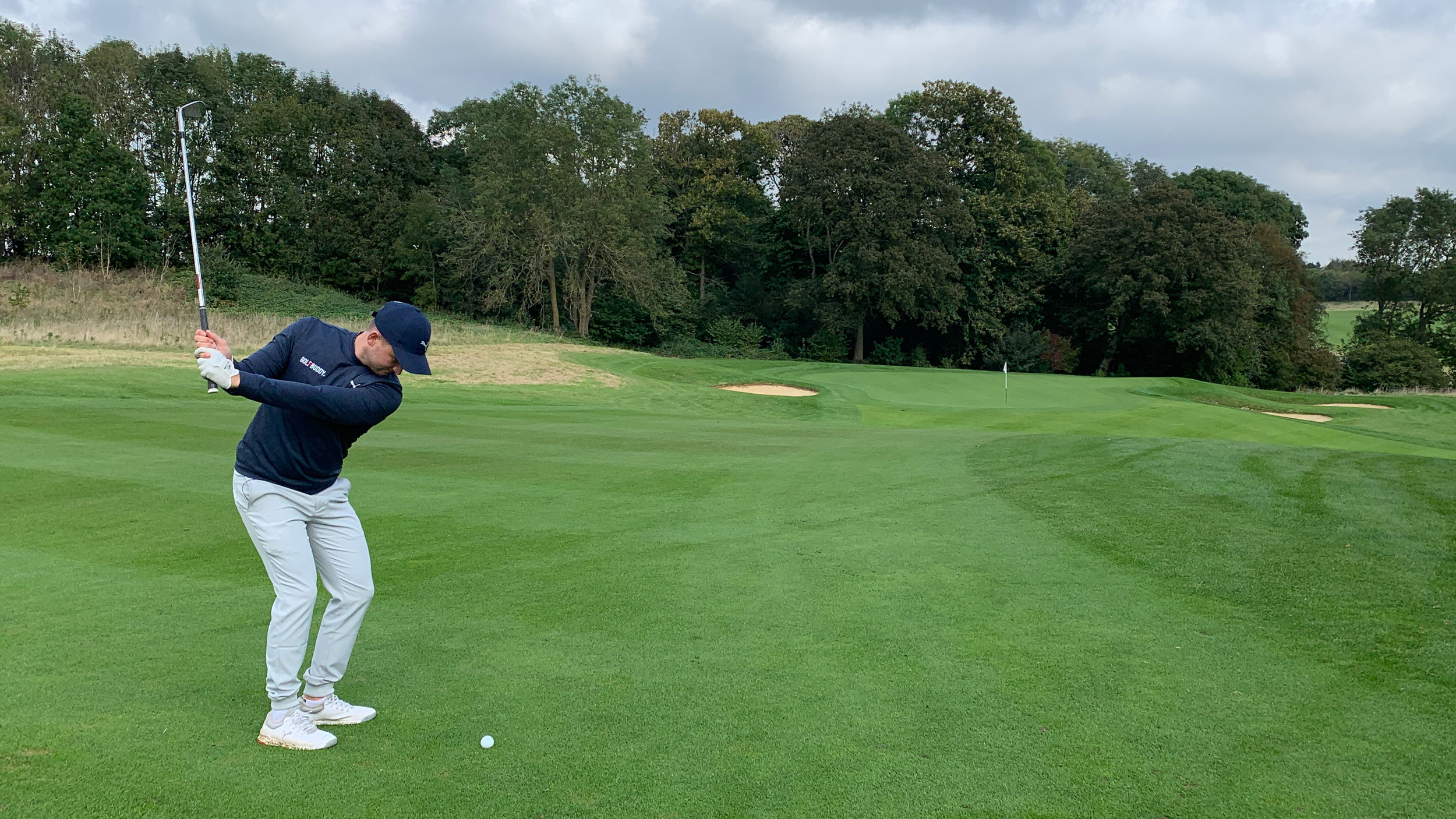7 Shots Every Golfer Needs... And How To Play Them!
In this video, Neil Tappin is joined by PGA pro Alex Elliott to talk through the 7 shots every golfers needs and how to play them


While the artistry of golf shouldn't be lost, it pays to have a few go-to shots in your locker. In the video and article below, PGA pro Alex Elliott runs through seven such shots that will help you get your handicap down and reach your potential...
7. The pitch shot
The main problem here revolves around incorrect set-up. First things first, go down the grip slightly to shorten the club. The ball should be in the middle of your stance and your shoulders should be parallel to target line.
Your lower half should be slightly open too, which makes it easier to rotate through the shot. A lot of players when they stand square on, they get very scoopy through impact, but the opening of the feet should help eradicate this.
Make some one-handed swings to get a feel for the correct motion and devote some practice time to this crucial part of the game.
6. Stock shot
Every golfer needs a stock shot they can rely on to get the ball in play and working out where your game sits on any given day plays a role in that. Hitting five shots - three with a 7-iron and two with driver - will help you gain an understanding of what the ball flight is doing on a specific day. Use that to dictate how to play and what to cater for on the course.
Another handy tip is to separate your thoughts when playing. Develop a thinking zone where you consider any swing thoughts you might have, and then when addressing the ball, make that your playing zone, where you let the shot dictate the swing.
5. Chip over a hazard
This is one of the most intimidating shots in golf and too many people try to play the flop shot like Phil Mickelson, which brings all the trouble into play. At a base level it is probably better to overcompensate and try to land the ball in the hole like Alex mentions in the video above.
Subscribe to the Golf Monthly newsletter to stay up to date with all the latest tour news, equipment news, reviews, head-to-heads and buyer’s guides from our team of experienced experts.
Again, set-up is key here, with the perfect ball position somewhere near the middle of your stance. From there, keep your shoulders parallel to the target while opening up your lower body.
The stance should be narrow, with roughly 60 per cent of your weight slightly on your left side. All that's left is to commit to the shot; a lack of acceleration through impact will result in a poor strike.
4. Punch shot
The main things we want to achieve with an iron shot are to get the hands in front of the ball and to make contact with the ball before the turf - learning how to play the low punch shot helps with both.
Grip the club towards the steel of the shaft and put the ball should slightly back in your stance. Your weight should be more on your lead side and you should be aiming slightly left of target (right for left-handers) to avoid the ball squirting right. I also recommend swinging along the line of your feet.
3. Chip from a bad lie
Taking the duff, thin and double hit out of play is the key here and there are two factors to consider. First, club selection is huge and second, set-up plays a big part. In terms of club selection, the best wedges have been designed to help here because they have more bounce options for improved interaction with the turf.
In terms of the address position, I want you to feel as if the toe of the club is on the ground. To help with this, consider how far to stand from the golf ball. In this case, get a little closer than usual and grip the club just short of the steel. Keep the weight left and feel as if the toe is brushing the ground during the swing.
2. Long-range putt
Getting the speed of the greens is vital. Before the round, instead of putting to the hole on the practice green, putt to balls to get a feeling for the pace. This also tunes the mind to focus on distance control rather than becoming preoccupied with whether the ball went into the hole or not.
When you get out onto the course, rather than just looking from down the line, find roughly the halfway point and stand adjacent to the putt. This will give you a far better perception of the true distance, which will allow you to make a better fist of getting it close.
1. Chip and run
The basic chip and run is a shot every golfer should have in their arsenal. We have all played it but most rarely practice it because it's not the glamorous option. It also requires some thought, too.
For a start, can you putt it? Second, if you want to chip it, then go and walk onto the green and see what the shot will actually look like. This will give you a better idea of distance and depth perception.
In terms of set-up, it is best to stand closer to the ball compared to a normal shot and make the swing slightly wooden in form to get a straight back, straight through swing. Really focus on your landing spot and let the ball do the rest of the work.

Location: Mottram Hall
Alex spent a great deal of time learning the game from fellow northwest golfer, Andrew Murray, who was a European Tour regular from 1979 to 1995. He spent three years on the European Tour caddying for Andrew’s son, Tom, before taking his PGA qualifications. His passion for the game and personality in front of the camera has helped him to create a thriving social media platform on Instagram and YouTube, where he offers a whole host of tips and advice to help viewers shoot lower scores.
Most significant influences on your teaching:
Mike Bender's book, 'Build The Swing Of A Lifetime', which I read during my PGA qualifications. He uses so many different tools to help students deliver the club better when hitting the golf ball. Andrew Murray, too. He helped form the way I interact with golfers and simplified what can be a complex game for a club golfer.
Advice for practice:
I like to get students to work in sets of five golf balls – three drills shots to two course shots. The drill shots have no consequence, but with the two course shots, I ask the student to create a green or fairway and go through a full routine.
Greatest success story:
One of my students hadn’t played golf for ten years - he'd lost his love for the game. After watching my online Instagram and YouTube content, he came for several golf lessons and has now joined a local golf club. Knowing I've helped get someone back into golf... you can't beat that.